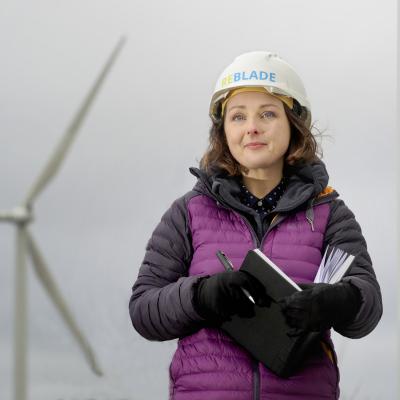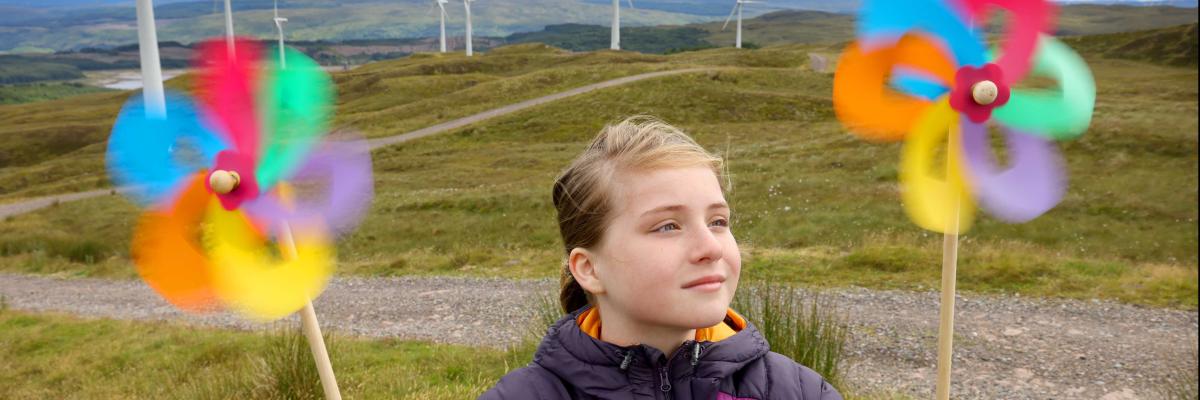
By Fiona Lindsay
Twenty years ago, exactly, I left university and began a graduate role that would ultimately lead me to a career path developing many of the UK's onshore wind farms. I'm now looking ahead to the next 20 years and more determined than ever to continue so that future generations can have the security of clean power generation that they deserve.
IN THE NOUGHTIES
Developing wind farm projects in the 2000s was never easy. Locating and designing wind farms required a compromise within decision making, and factors such as visual amenity, ecological buffers, cultural heritage, to name a few, were all constraints to achieving the maximum energy generation that could be exported to the grid.
Stringent Environment Impact Assessment (EIA) processes and robust public consultations identified the right level of information to allow for the design of a balanced project and find ways to mitigate impacts.
Finding potentially big wind farm sites in Scotland wasn’t hard but getting them from feasibility to scoping and then into planning was tricky, and took time, lots of time and consultation, and for all the right reasons.
The wind farms that did make it to consent and into operation had to pass many tests and went through the hands of a huge range of industry and government specialists, all working with lots of guidance.
By 2010, the so-called “low hanging fruit” was considered hard to find.
By the 2010s people were beginning to ask, “where do the extra thousands of turbines go to meet these stringent international renewable commitments required before 2020?”.
Smaller English sites faced strict limitations, making it difficult to develop projects without encountering frequent objections about their impact on visually sensitive areas.
The push was on to make progress, and my personal objectives were all about making the financial models and the risk registers work to increase the wind farm development portfolio, requiring some hard thinking on my part.
Developing wind farm projects is still not an easy job today, and it shouldn’t be.
We need to be smart about where we build wind farms and how we do it, and it’s the responsibility of the developers to do this properly.
Planning and permitting aside, grid is also an ever-expanding headache. The cost of mitigating against identified impacts can be massive, and aviation solutions alone can be enormous! At the end of the day, developers need confidence that consents can come to fruition, eventually.
Even with very cautious spending, this can be difficult and ultimately, projects must be able to achieve financial investment decisions if they are ever to be constructed.
LOOKING BEYOND 2025
The challenges of unlocking onshore wind quickly clearly haven’t been lost on the Onshore Wind Taskforce. with the intention of publishing a Contracts for Difference (CfD) response this summer which could include possible term changes and other amendments to boost investor confidence in wind farm development.
The recently published Onshore Wind Task Force Strategy sets out 42 distinct actions spanning six key areas to accelerate wind deployment by addressing structural barriers.
With national targets aiming for 25GW of installed onshore capacity by 2030 and 30GW by 2035, it’s clear that there is significant opportunity to revisit early sites historically appraised as “low-hanging fruit” through initiatives such as repowering and extending the life of existing assets.
With this in mind, the Onshore Wind Task Force Strategy includes plans to consult on the use of permitted development rights for small-scale deployment and commercial wind farm repowering.
If approved, the implementation of these actions could significantly expand onshore wind capacity through identifying the optimal locations for small-scale commercial development and by advancing repowering efforts.
There's a whole key area - Theme 6 - on Supply Chain, Skills and the Workforce, within which the role that recycling and circular economy must play in the wind energy sector throughout the entire lifespan of wind energy assets.
I’m proud to say that Action 40 within this key area highlights the opportunity for the UK to become a world leader in circular wind for onshore components, making mention of Reblade and highlighting excellent work currently ongoing in the sector.
Our circular wind energy best practice is emerging through a mix of forward- thinking industry, government, academic and community partners. This is similar to how the sector evolved it’s “Good Practice During Wind Farm Construction” guidance, except this time the focus is on responsible deconstruction to support in the repowering of the UK’s best sites.
With this also comes socio-economic opportunities in terms of supply chain growth, skills development and building the future workforce.
The deconstruction of our older wind farm assets is essential to allow for repowering which must happen to maintain and increase our existing renewable energy capacity.
The bonus is we get to unlock more onshore wind quickly whilst creating a circular economy at the same time.
This is where my passion truly lies.
